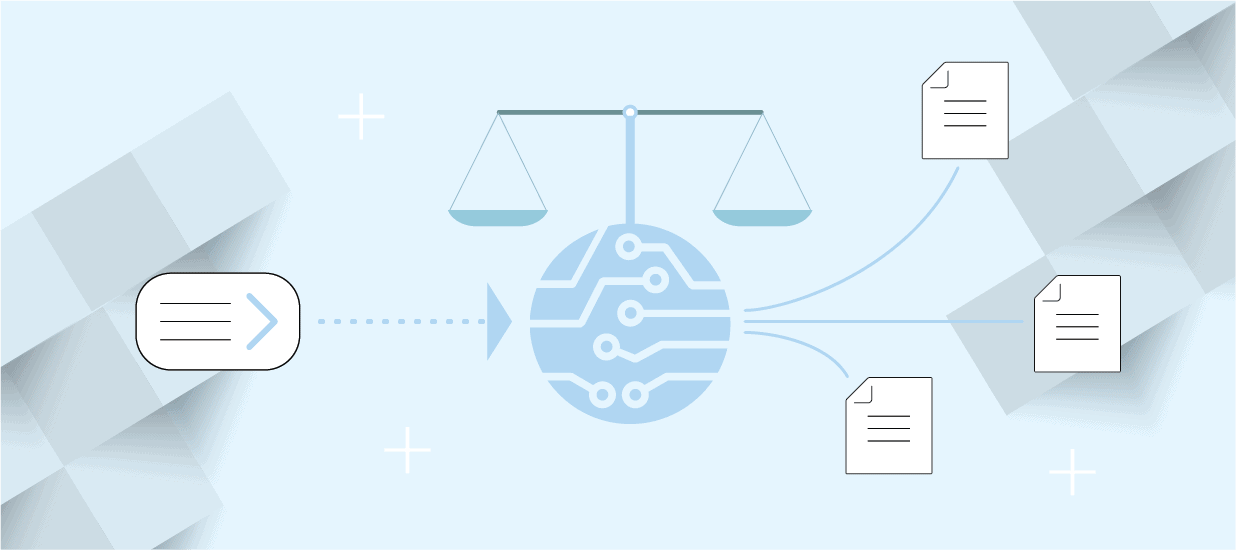5 minute read
Building a strong customer reference program helps your company quickly gather and share testimonials from current customers with sales prospects. This article shows you how to do it effectively and efficiently.
Convincing people to choose your product isn’t just about having the best features or the strongest marketing messages—it’s about trust. And nothing builds trust like hearing from real customers who have seen success with your product. A strong customer reference program ensures that your best advocates are ready to share their experiences, helping you close deals faster and strengthen your brand’s credibility.
The Importance of Customer References
Before we explore how to build a customer reference program, it’s important to define what a customer reference means and why they are important.
A customer reference is a positive story or testimonial provided by a current customer. The customer reference should describe the customer’s experience with your company’s products, services, or your company.
Customer references are important because it is more convincing to get product information from a real customer than from the company’s sales or marketing team. Anything a company says about their product is going to be seen as tainted by self-interest since they directly benefit from your purchase. When a customer freely gives a reference, however, they have nothing to gain from your purchase. This makes customer references a powerful tool for improving conversion.
Sales teams can use customer journeys to persuade potential buyers to complete a sale, which can accelerate business goals. Companies share customer references at different points during the buyer’s journey.
Why are Customer Reference Programs Important?
Customer reference programs help companies and sales teams proactively identify willing customers and testimonials. When providing customer references to prospective buyers, time is of the essence. No sales team wants to scramble to find willing customers under a deadline. However, getting and keeping customer references can be challenging and time-consuming. Although customer references are critical for sales success, product management and product marketing teams are often the ones responsible for sourcing them. This is why it’s critical that product managers learn how to build a customer reference program.
How to Create a Customer Reference Program
Developing a customer reference program can help teams avoid the last-minute scramble to source customer references. It can also help prevent burning out customers by asking the same ones too often and gives you a chance to align types of customers with specific reference requests.
There are seven simple steps to creating a customer reference program. Using this approach, you can easily ask for customer references and record responses. This process can help build your company’s credibility and brand equity while supporting your sales team’s goals.
Step 1: Ask for a customer reference
Product professionals often wonder how to ask for customer references. The answer is simple – work with your sales team to identify customers who are strong candidates to provide references.
Companies are sometimes hesitant to ask for customer references. Sales teams may want to protect loyal customers by not asking for “favors”. Other times, this process may not be encouraged internally or may not be prioritized until there is an urgent need for a customer reference. Creating internal standards and processes will make asking customers for references easy and worthwhile.
Customers are often the best spokespeople, and sometimes salespeople, for your company. Here are steps to make asking for a customer reference easier:
- Include customer reference language in the final negotiations of a contract. Establishing this possibility before your prospect officially becomes a customer will make it easier to broach the subject in the future.
- Designate a marketing team member to work with sales representatives on opportunities to secure new references. Encourage account specialists to identify and ask for references too. Outside team members may identify opportunities that sales teams overlook.
- Track the sales representatives and account specialists who procure and contribute references. Acknowledge their contributions to the team. This can encourage other sales reps to source references.
Developing standards for asking for customer references can help empower your internal teams. The risk of rejection may discourage teams from asking for customer references. However, customers are often your biggest champions and may be eager to help prospective buyers find solution
Step 2: Set expectations with your references
You should set proper expectations with potential reference at the outset, then meet those expectations. Clearly tell customers how you plan to use the references. Here are some ways that your company can use customer references:
- Public relations, such as PR statements or media appearances
- Digital assets, such as websites or social media
- Sales collateral, such as brochures
- Direct communication to prospects in virtual calls or meetings
You also define what type of personal information the reference will share. Furthermore, disclose how that information will be displayed. Personal information may include the reference’s first and last name, title, company name, and contact information such as email or phone number. You should also understand if your company has tight restrictions on public testimonials.
As a rule, it will be easier to gather customer references if the reference doesn’t have to go through many internal approvals with their company. You don’t want to overstep professional or administrative boundaries. That can help establish a successful, long-term working relationship.
You should also set expectations about the topics you want customer references to speak about. You should not ask customer references to speak on topics with which they don’t have experience. Always try to match the job level and subject matter expertise of the prospect with whom your reference will be speaking. Aligning expectations can improve the reference experience for all parties.
Step 3: Avoid reference burnout
You’ve worked hard to gather customer references, but don’t scare them away by asking them to do too much work. Again, set expectations to understand how much work is too much for your reference. Ask them in advance and check back with them regularly to ensure that they are still happy to act as a reference for you.
You can also prevent reference burnout by rotating and ranking references to best fit different prospects. For example, match a customer who has recently experienced great troubleshooting and customer service with a prospect who has questions about your company’s support. You can then compare how the results compared to the customer’s expectations. This will help you identify strong references for different topics. On the other hand, if you find it difficult to match current customers with prospects, this documentation can can help you communicate why a particular customer “needs a rest”.
The other key to avoiding reference burnout is to have many references ready. If you have only one customer willing to speak about your new product, you should focus the team on nominating additional customer references.
Step 4: Stay in contact with your customers
The best way to identify references is to learn how customers have implemented your product or are using your service. Often, a customer’s willingness to be a reference is ultimately based on their relationship with you or with others in your organization. Maintaining customer relationships can support a successful customer reference program.
Here are some questions that you can ask to make sure your customer could be a good reference:
- How happy are they?
- Have they bought subsequent products from your company?
- Has your contact changed roles, or left the company?
You should update customer information in a centralized place. Always ask the customer’s sales rep or account specialist to confirm their information before reaching out. You can also track underused customers with some of the same methods previously mentioned. You should also reach out to these customers and either get them involved or let them know that they are still top of mind. Keeping track of these relationships can go a long way toward creating success.
Step 5: Create a champion for your customer reference program
Identifying a program owner and internal champion for the customer reference program can help ensure that the customer reference program continues. A program champion can help communicate and demonstrate the benefits of an official customer reference program. They can also maintain the momentum of sourcing and matching customer references for prospects.
Customer reference program champions may be a marketing or sales team member who understands the benefits and challenges of customer reference management. Often, getting executive buy-in is essential to the longevity of the customer reference program.
Step 6: Appreciate your references
Remember to thank your references! Contributing testimonials or meeting with prospects can be time-consuming for your references. It’s important to acknowledge the value that your customer reference has provided. Send hand-written thank you notes. If possible, send a gift, especially to those which provide regular, high-value references. And at the end of the year, send a card and token of appreciation to everyone in your customer reference program. Everyone likes to feel appreciated, and proper etiquette and timely follow-up may improve your customer satisfaction ratings too.
Step 7: Automate your customer reference program.
As your customer reference program grows, it may become difficult to manually track and record details about your references. Software solutions for customer reference programs can help keep your activities organized, productive, and aligned with your goals.
An effective customer reference program program helps close sales faster and enhances your company’s credibility. It can also attract more media coverage, generate compelling marketing content, and strengthen customer relationships—reinforcing your brand’s leadership in the industry.
Author
-

The Pragmatic Editorial Team comprises a diverse team of writers, researchers, and subject matter experts. We are trained to share Pragmatic Institute’s insights and useful information to guide product, data, and design professionals on their career development journeys. Pragmatic Institute is the global leader in Product, Data, and Design training and certification programs for working professionals. Since 1993, we’ve issued over 250,000 product management and product marketing certifications to professionals at companies around the globe. For questions or inquiries, please contact [email protected].
View all posts







